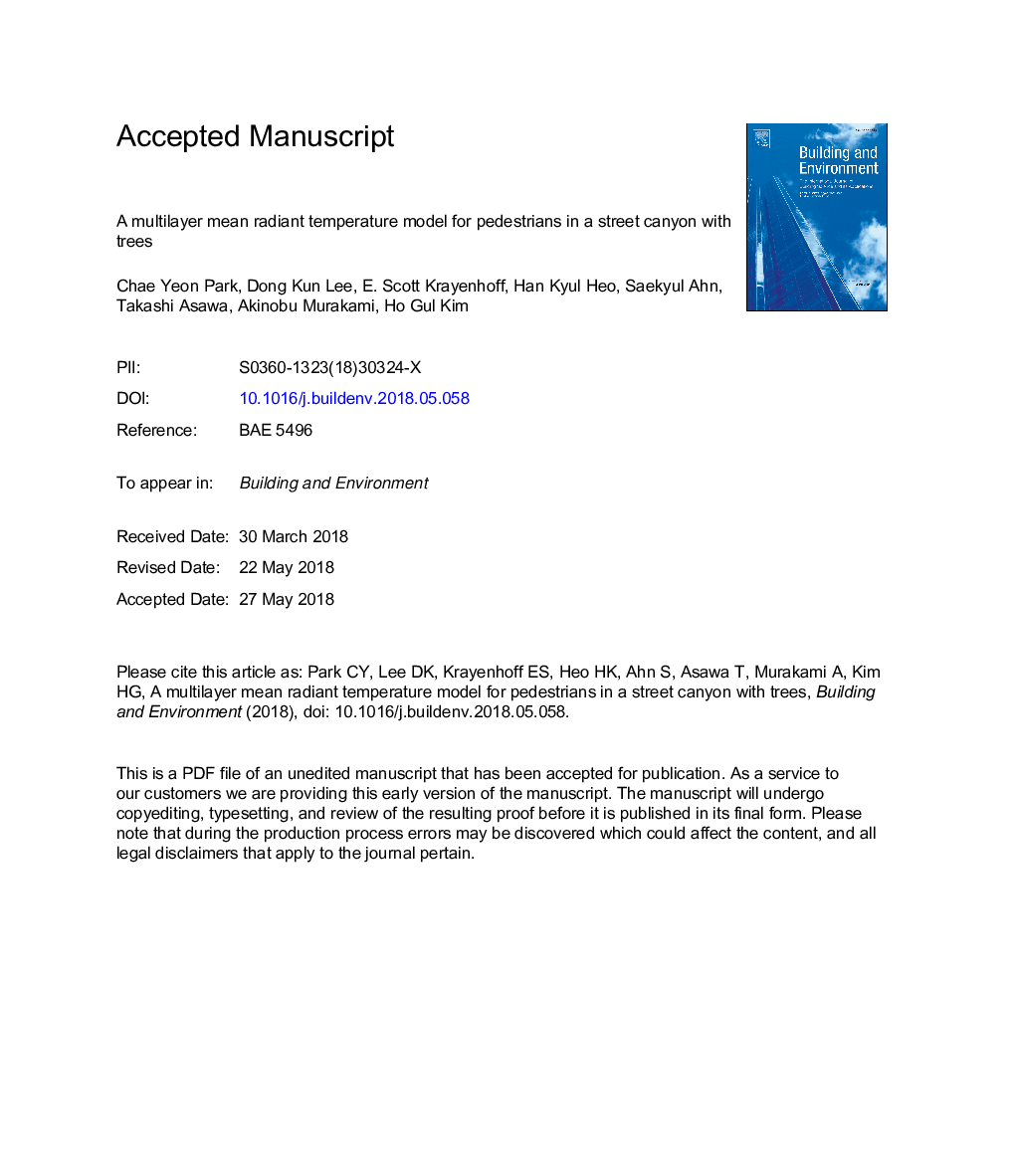| Article ID | Journal | Published Year | Pages | File Type |
|---|---|---|---|---|
| 6697044 | Building and Environment | 2018 | 40 Pages |
Abstract
We introduce a multilayer model to estimate mean radiant temperature (MRT) and evaluate the pedestrian thermal comfort in a street canyon. This multilayer MRT model (MMRT) is suitable for urban streets with varying building and tree heights. The model simulates shortwave and longwave radiation exchange for each urban element and area-weighted view factors, then finally obtains MRT of pedestrians on the sidewalk. Probability density profiles of buildings and trees enable the consideration of urban vertical heterogeneity. Furthermore, Monte Carlo ray tracing (MCRT) allows the model to evaluate the radiation transfer in complex urban areas. We verify the effectiveness of MCRT and the probabilistic density profile approach. A sensitivity test conducted in Seoul on September 1, 2017 using the MMRT reveals that MRT can be reduced by 23â¯Â°C as the tree leaf area density increases from 0 to 1, and by 18â¯Â°C as the tree height increases from 0â¯m to 12â¯m in 1300 LST. The model controls urban form and pavement parameters as well as tree parameters. We aim to use this model to compare diverse MRT mitigation strategies and confirm the best strategy for thermal-friendly street design.
Keywords
Related Topics
Physical Sciences and Engineering
Energy
Renewable Energy, Sustainability and the Environment
Authors
Chae Yeon Park, Dong Kun Lee, E. Scott Krayenhoff, Han Kyul Heo, Saekyul Ahn, Takashi Asawa, Akinobu Murakami, Ho Gul Kim,
